2017-05-09 By Robbin Laird
The Williams Foundation working closely with the Australian Defence Force has provided a public forum for rethinking how to reshape their defense force to deal with 21st century challenges.
This is the sixth Special Report produced in cooperation with Second Line of Defense.
The first report looked at the impact of the coming of the F-35 and the emergence of fifth generation warfare on the force.
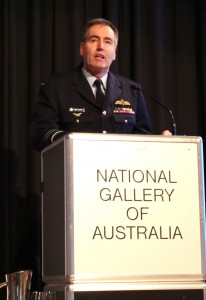 In his presentation to The Williams Foundation seminar on air combat in 2025 and beyond, Air Marshal Brown, then Chief of Staff or the RAAF focused on the F-35. He highlighted the centrality of the decision superiority inherent in the systems of the aircraft. But underscored that training and effective concepts of operations were necessary to achieve a latent advantage.Credit Photo: Second Line of Defense
In his presentation to The Williams Foundation seminar on air combat in 2025 and beyond, Air Marshal Brown, then Chief of Staff or the RAAF focused on the F-35. He highlighted the centrality of the decision superiority inherent in the systems of the aircraft. But underscored that training and effective concepts of operations were necessary to achieve a latent advantage.Credit Photo: Second Line of Defense
The second report took that initial discussion to Copenhagen where the Williams Foundation in cooperation with the Centre for Military Studies (University of Copenhagen) hosted a seminar on airpower innovation.
The conference launched a significant effort to think through the core problem of coalition airpower as seen from the standpoint of the smaller powers or air forces, or in the case of the United States, the role of the USMC in working through transformation correlated with evolving coalition approaches.
Operators from key Air Forces gave the core presentations that then drove the broader discussion.
https://sldinfo.com/integrating-innovative-airpower-a-report-from-the-copenhagen-airpower-symposium/
The third report then looked at the RAAF approach to the transformation of jointness as they prepare to introduce the F-35 into the force.
The Aussies have a modern air fleet, with Super Hornets, KC-30A tankers, the Wedgetail E-7 battle management system Heron UAVs, and C-17s, recently in service and are seeing Growlers, the Triton UAV, the P-8 and the F-35 coming into the fleet shortly.
But no platform fights alone, and the Aussies are looking at how to rework their forces to shape a more interactive and enabled force. The F-35 is seen as not a replacement aircraft, but one which takes the integrated enablement of the force to the next level, but that will not happen without the transformation of the RAAF and with it of the ADF.
https://sldinfo.com/plan-jericho-the-raaf-shapes-a-transformation-strategy-2/
The fourth report focused directly on new approaches to air-land integration associated with the evolution of RAAF and Army thinking.
The last decade has seen a significant shift in how airpower has supported ground operations. With the introduction of systems like Rover, the ability of airpower to provide precision strike to the ground forces saw a significant change in fire support from a wide variety of air platforms. Precision air dropping in support of outposts or moving forces introduced new capabilities of support.
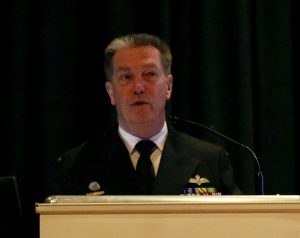
Yet this template of air ground is really focused on air support to the ground whereas with the shift in the global situation, a much wider set of situations are emerging whereby the air-ground integration approach will become much wider in character, and the ability to insert force rapidly, as a precision strike capability, and to be withdrawn will be a key tool in the toolbox for decision makers.
Fifth generation enabled operations will see a shift to a distributed C2 approach which will clearly change the nature of the ground-to air command system, and the with the ability of fifth generation systems to generate horizontal communications among air assets outside the boundaries of a classic AWACs directed system, the change in C2 will be very wide ranging.
The fifth report focused on new approaches to air-sea integration. The Australian military is shaping a transformed military force, one built around new platforms but ones that operate in a joint manner in an extended battlespace. The goal is to extend the defense perimeter of Australia and create, in effect, their own version of an Anti-Access/Area Denial (A2/AD) strategy.
They also recognize a key reality of 21st century military evolution in terms of shaping an integrated information-based operating force. Interactive modernization of the force is built around decision-making superiority and that will come with an effective information dominant force.
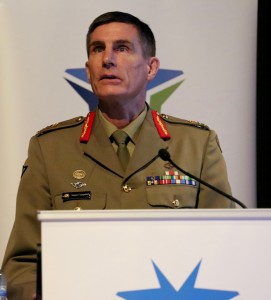 Lt General Angus Campbell, Chief of the Army, addresses the question of innovation and modernization for the ADF, Credit: Photo: Second Line of Defence
Lt General Angus Campbell, Chief of the Army, addresses the question of innovation and modernization for the ADF, Credit: Photo: Second Line of Defence
That makes the Aussies a key partner to the US and other allies in discussing openly a path for force transformation along lines where cutting edge thinking is occurring in the US and allied forces. Put bluntly, they are driving a public discussion of transformation in a way we have not seen in the United States for a long time.
And this key role in providing a public forum to discuss the key challenges of defense transformation have been carried forward with the sixth and latest Special Report, namely on how to build not a joint force but an integrated one. And doing so is especially crucial as we move from the land wars of the past decade towards one in which a faster tempo of operations and higher temp of warfare can be anticipated.
In this latest report, the major presentations and discussions at the Williams Foundation seminar on integrated force design held on April 11, 2017 in Canberra, Australia are highlighted along with interviews conducted before, during and after the seminar as well.
Interviews with the Army, Navy, and Air Force have been woven into the evolving narrative of shaping and designing an integrated force.
But the core point is that raising questions, which drive you towards where the force needs to go, is the challenge; it is not about generating studies and briefing charts which provide visuals of what a connected force might look like.
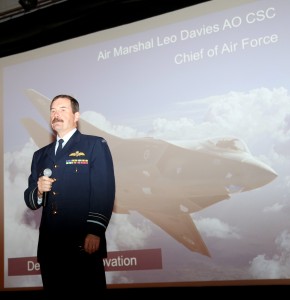 Air Marshal Leo Davies providing the opening address at the Plan Jericho Conference held by the Williams Foundation in Canberra, Australia, August 6, 2015. Credit Photo: Second Line of Defense
Air Marshal Leo Davies providing the opening address at the Plan Jericho Conference held by the Williams Foundation in Canberra, Australia, August 6, 2015. Credit Photo: Second Line of Defense
It is about creating the institutional structure whereby trust among the services and between government and industry is high enough that risks can be managed, but creative destruction of legacy approaches is open ended as well.
It is about empowering a network of 21st century warriors and let the learning cycle being generated by this network drive acquisition, modernization and operational concepts.
It is about innovations within concepts of operations generated by the network to flow up into strategic change.
In short, the Williams Foundation has provided a crucial venue for thinking through the challenges of building a flexible, agile 21st century combat force grounded in a capability to fight and win in a high intensity combat setting.
The background is a real world effort by the Australian government to recapitalize their defenses forces via the acquisition of new platforms, leveraging legacy ones and shaping an integrated force going forward.
Integration is crucial not simply because Australian forces are relatively modest; but with new equipment coming on line, capabilities such as software upgradeability in key platforms and the digital revolution provide a unique opportunity to rethink integration.
Rather than pursuing after market integration or simply connecting stove piped service platforms after the fact with a bolt on network, how might integration be built from the ground up?
The approach being taken is not theological or an application of set of propositions or laws written down in a guidebook.
The approach is to work greater integrative processes within and among the services, and to highlight the need to pose hypotheses along the way concerning how greater integration is achievable where appropriate and ways to achieve more effective outcomes for the development of the force.
It is a quest which is being shaped by realigning organizations, and trying to build from the ground up among the junior officers a willingness to shape interconnectivity from the ground up.
It is about building a 21st century network of operators who are empowered to find force integration solutions, again where appropriate or service specific outcomes appropriate to the different warfighting domains.
Shaping a way to conduct the quest is very difficult; but the ADF is clearly been empowered to do so by Government.
Such a quest inevitably will fail and succeed along the way; but without setting this objective from the ground up, it will be difficult to change the operating concepts and the then the concepts of operations which can drive the transformation of the force.
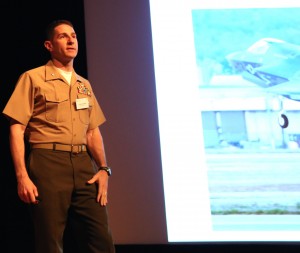 Lt. Col. “Chip” Berke discussing his F-22 and F-35 experiences with the Australian audience at the Williams Foundation Conference, March 11, 2014. Credit Photo: SLD
Lt. Col. “Chip” Berke discussing his F-22 and F-35 experiences with the Australian audience at the Williams Foundation Conference, March 11, 2014. Credit Photo: SLD
The United States may have Joint Forces Quarterly; the ADF has a transformation process underway.
They are definitely following the Nike model: Just do it!
And for the United States, even when the Aussies are adopting out own platforms, they are doing so in a very different context in which force integration is set as a strategic goal, rather than the pursuit of service modernization.
In effect, the Aussies are providing the experimental model which can be quite relevant to others, including the United States.
In the mid 1990s when I worked at the Institute for Defense Analyses, one of the tasks on which I worked was for the Roles and Missions Commission. One of the key tasks, which the Congress had tasked the Commission to pursue, was to determine what the United States might learn from allies.
We worked hard on our white paper but when delivered to the Commission we were told by a very senior member of the Commission: “Good work; but why did you really examine the question? We are so much bigger than any of our allies, there is very little we could learn from them or apply to our own practices!”
Unfortunately, not much as changed in the attitude of many defense civilians, but many leaders in the US military do not share such views, notably with allies and the US adopting some of the same key platforms at the same time, like P-8, Triton, and the F-35, and some allies operating more advanced equipment than the US itself.
Obviously this is a work in progress and perhaps always will be.
The challenge is to get in place a template which allows for greater capabilities to shape force integration but in an ongoing manner; more of an directive ongoing inquiry rather than a fixed point on the compass.
To read the Special Report please enter your name and email below and you will then be able to download the report directly.


